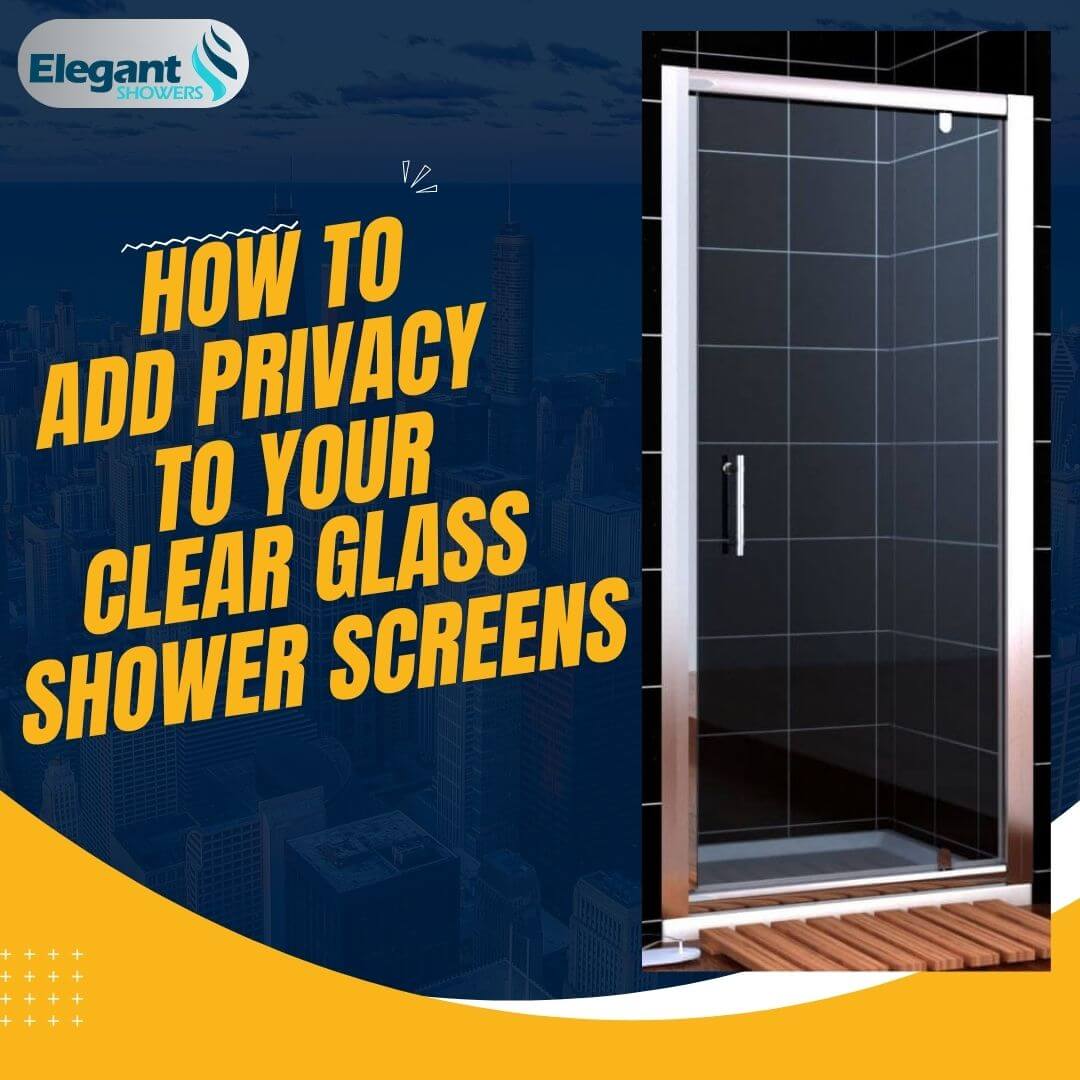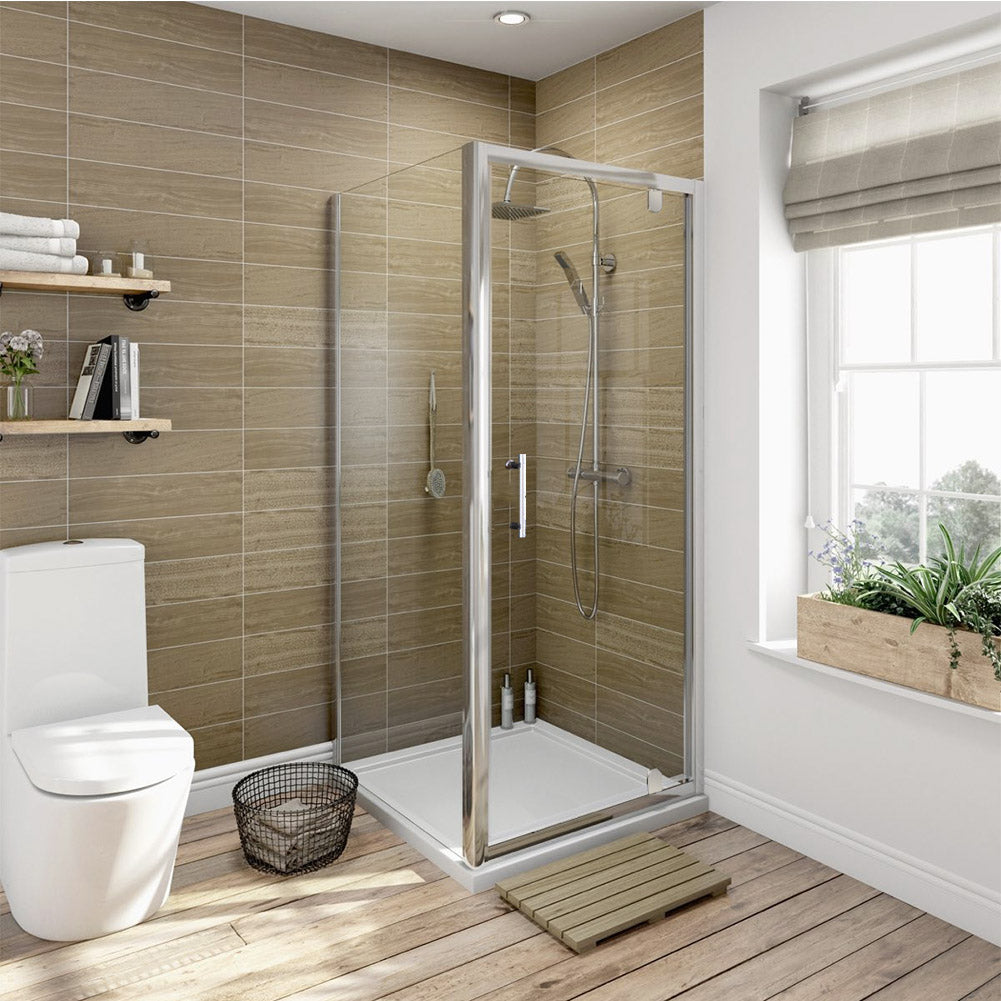Adding privacy to your bathroom can make it more comfortable and relaxing. When others in your home can hear or even see into your bathroom, it takes away the sense of refuge that this room can provide. Luckily, there are several easy and affordable ways to increase the privacy of your bathroom with just a few upgrades.
1. Install a Locking Door
The most basic way to boost bathroom privacy is by installing a door that locks. If your bathroom currently has no door or only a sliding door that doesn't lock, replacing it with a traditional hinged door that latches provides security and separation from the rest of the house.
Choose a door design with a lockset built into the handle for simple operation. For additional visual privacy, select a solid core door rather than one with louvers or glass panes that allow sightlines into the bathroom.
2. Add a Shower Screen
Exposed shower and bathtub areas create visibility issues within the bathroom. Adding a shower screen neatly contains the shower space to prevent water from splashing outside the enclosure. Shower screens come in frameless, semi-frameless, and framed styles to suit your bathroom's aesthetics.
If you want to know more: Sliding vs Pivot Shower Screen: Comparing the Pros and Cons!
Clear glass maintains an airy look while letting light filter through. For extra coverage, choose textured or opaque glass panels that blur the outlines of anyone inside the enclosure. Install hinged shower screens on two adjacent walls or as a neat partition for corner showers. Make sure the screens are properly sealed to keep moisture from leaking out.
3. Install a Privacy Window Film
Windows in a bathroom can be a major privacy concern. Even if the window is frosted or textured, it still allows indistinct views in from outside. An easy solution is to apply a removable opaque window film. These static-cling PVC films stick to the glass to fully block visibility. They come in blackout shades or with translucent patterns to find the right balance between privacy and light for your space. Install the film using a spray application fluid for a wrinkle-free look. When properly applied, the film can last for several years before needing replacement.
4. Use Curtains and Blinds
For standard windows and glass doors, install curtains or blinds to control privacy. Blackout curtains lined with a thick fabric completely block outside visibility. Or try layered curtains with sheers and solid panels to calibrate the amount of light and privacy.
For skylights and ceiling windows, blinds offer privacy with light control. Look for adjustable slat blinds that tilt to let in air while blocking views. Sturdy shower curtains also limit visibility into the shower and bath area when drawn closed.
Match the curtain to your bathroom's style with colors, patterns, cloth, or plastic materials. Use inner shower liners as needed to keep splashes contained. If you're interest in bathroom decortion: Shower Screen Styles for Every Bathroom Décor.
More info: Shower Curtains vs Shower Screens for Aussie Homes.
5. Strategically Place Mirrors
The positioning of your bathroom mirror impacts visibility and privacy.
- First, make sure your mirror doesn't inadvertently show reflections of the toilet or shower area that are visible from the doorway.
- Next, consider where you stand when using the mirror-if you can see out through the bathroom door while at the sink, so can others see in. Moving the mirror to a side wall or rotating it can solve this issue in smaller bathrooms. In a larger space, use a narrow mirror above the sinks to limit the view.
- Finally, you may want to add a full-length mirror inside a closet or behind the bathroom door for dressing. This keeps it out of sight when not needed.
6. Add a Bathroom TV or Radio
Installing a TV or radio in your bathroom improves acoustical privacy from the rest of the house. Set the volume just loud enough to mask ambient noises inside the room without disturbing the rest of the home. Waterproof, slim LED TVs are designed for the humidity and tight fit of most bathrooms today.
For a lower profile, hide the TV behind a mirror or build it into the wall. Add external speakers for better sound if needed. Streaming devices and antennas offer access to numerous channels. A bathroom radio lets you listen to music or news while filling essentially the same sound privacy role. Mount it near the shower or sink for easy access.
7. Install Dimming Lights
Harsh overhead lighting makes any room feel exposed. Swap out ceiling fixtures for ones with dimmers. Or supplement the main light with accent sconces, under-cabinet lighting, or night lights that provide a warmer glow. Use motion sensors or switches to control different lighting zones and scenarios.
Dimming the lights in the evening instantly makes a bathroom feel more secluded. Experiment to find the right balance of visibility and ambiance that makes your space comfortable.
8. Add Soft Closings
If privacy suffers every time a door or drawer bangs loudly, upgrade to soft closing hardware. These mechanized hinges and slides have built-in dampers to gently catch the door and pull it the last few inches closed without slamming. Install soft closing hinges on cabinet doors and drawers throughout the bathroom.
Replace the main door hinge with a soft close version or add self-adhesive bumpers to quiet the latch. Use soft close kits on sliding cabinet drawers as well. This subtle change eliminates noise that announces anyone entering or using the bathroom.
9. Soundproof the Room
For a major renovation, you can soundproof the bathroom to prevent noises from carrying throughout the home. This involves adding mass-loaded vinyl barriers under the drywall and using construction adhesives for better air sealing. You can also replace thin walls with insulated interior walls built on a staggered stud design that minimizes sound transmission.
Weatherstrip the door and outlet gaskets to seal gaps. Upgrade to a solid core door for better sound blocking. Add absorptive materials like acoustic wall panels and ceiling tiles to limit echo and contain sounds inside the room.
Final Words
Creating a private sanctuary in your bathroom is possible with small upgrades like shower screens, curtains, and dimmer switches. For a fully soundproofed space, renovations like new walls and weatherstripping help cut down on noise leakage dramatically.
Use these tips to find the right balance of light, views, and sound protection that make your bathroom a true retreat.






